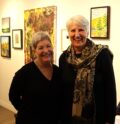Commentary
A special time to be in Bancroft
August 3, 2017
By Nate Smelle
For many reasons, August has always been one of my favourite months to enjoy the Bancroft area. The long, often hot and sunny days give us warmer waters for better swimming, a deep green forest freshening our air, and billions of blooming wildflowers filling the bellies of the bees and painting the landscape with a rainbow of colors. In August, the black flies are replaced with butterflies and dragonflies, bird populations spike as a seasonal variety of species take up temporary residence in the area on their slow route south and of course the blueberries and raspberries are ripe for the picking.
For the first half of the month, those of us lucky enough to be in the Bancroft area also treated to some of the best skies for stargazing on this side of the Milky Way. This is due mostly in part to the Percy had meteor shower which lights up the night sky each year at this time. This mesmerizing cosmic occurrence takes place as the earth starts to move through the Swift Tuttle comet’s debris tail in late July continuing through until mid to late August. This year’s meteor shower peaks from Aug. 11 until Aug. 13 and is best viewed between the hours of 11 p.m. and 3 a.m.
The infinity of stars above us are not the only thing shining brightly in August, of course August is when the Rockhound Gemboree comes to town. While many communities across Ontario are just catching on now to the economic boost a signature event provides the local economy, Bancroft’s iconic event has been going on for more than five decades. With tens of thousands of mineral hungry visitors about to descend on the town this weekend many locals find themselves stocking up a little more than usual at the grocery store, in order to avoid any unnecessary trips into town on what usually tends to be one of the busiest weekends in Bancroft each year. Having attended six of the last seven Gemborees, one might think I would’ve bored of it by now, however, this is definitely not the case. No matter how many times I visit the Gemboree, I always seem to come away having learned something that has changed and enriched my outlook on life.
Walking up and down the aisles and admiring the vast assortment of crystals, fossils and dinosaur bones – many of which found in the Bancroft area – my mind drifts back to a time before even a single book had yet to be written. What I love most about the Gemboree is that it always inspires me to look back at how this land came to be the place it is today. Similarly, learning about the history of the Algonquin people atop the Eagles nest last weekend during the Nature Discovery Tour with Christine Luckasavitch, Stephen Hunter and Chuck Commanda, reminded me of how incredibly important it is to appreciate how the past shapes our present and eventually our future.
Providing the group with insight into the process of building a birch-bark canoe, Hunter and Commanda demonstrated how nature’s ingredients come together to create the vessel which enabled the Algonquins to survive and thrive in the marine ecosystem left behind by the melting Wisconsian glacier. The two are continuing their canoe construction outside of the Bancroft museum over the next two weeks to share their knowledge and passion for this ancient technology. Building on their teaching during the tour, Luckasavitch pulled tools and artifacts from her satchel, explaining how the Algonquins would have shaped and used each item to improve their quality of life. One of the things I found most enlightening about this part of the tour was the location and way she discovered these artifacts. Assuming beforehand that the stone tools, pottery shards and arrowheads would have been unearthed by way of an excavation that would have required much digging, I was surprised to learn that almost all her collection was found on, or near the surface in locations throughout the Madaouskarini Algonquin territory (Bancroft area). In a few cases, Luckasavitch said she came across some of the artifacts on well-trodden hiking trails.
Thinking of how much time I have spent in the backcountry in this area I pondered how many artifacts I had overlooked in my travels. Usually putting almost all my energy into finding and focusing on wildlife, I most certainly have missed out on countless history lessons hiding in plain view beneath my feet. Taking care with each step as I hiked back to my car after the tour, I could not take my eyes off the ground. With so much of our past still so close to the surface and within reach in this relatively unpaved paradise, there is obviously a great deal left for us to learn from the trails where we tread.

















